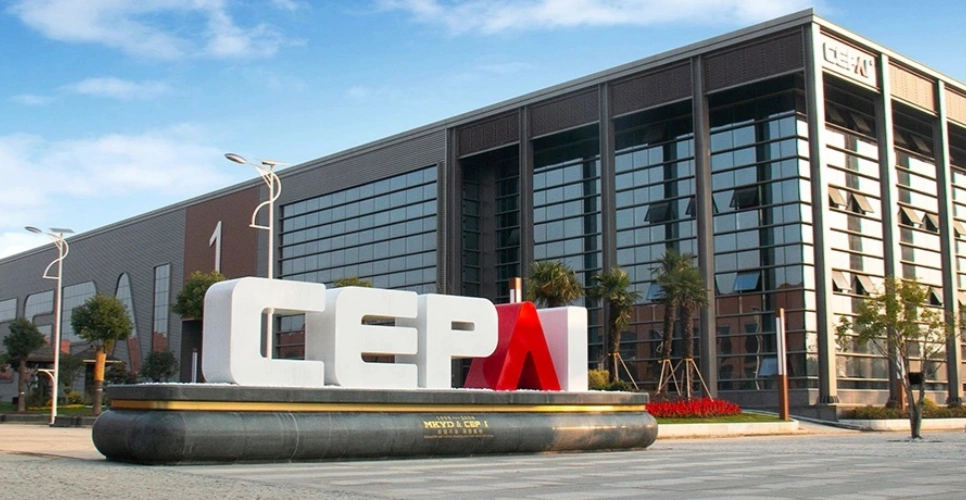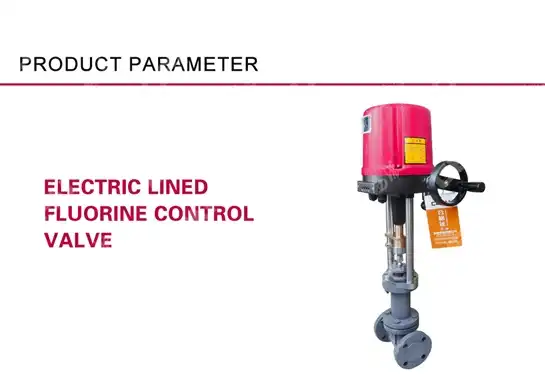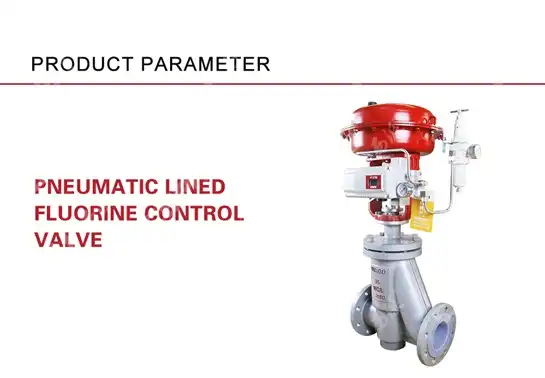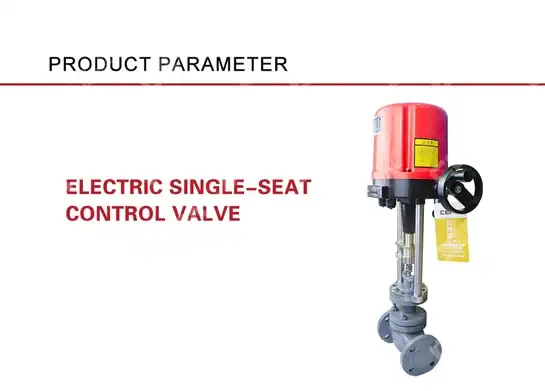A Buyer's Checklist for Low-Temperature Control Valves in LNG Plants
Picture this: Your LNG facility faces an unexpected shutdown due to valve failure at -162°C, costing millions in downtime and potential safety risks. When operating in the extreme cryogenic environment of liquefied natural gas processing, selecting the right Low-Temperature Control Valve becomes critical for operational reliability, safety, and profitability. This comprehensive buyer's checklist provides essential guidance for procurement professionals, engineers, and plant managers who need to make informed decisions about Low-Temperature Control Valve selection for their LNG operations, ensuring optimal performance while minimizing total cost of ownership.
Understanding Low-Temperature Control Valve Requirements in LNG Applications
The LNG industry presents unique challenges that demand specialized Low-Temperature Control Valve solutions capable of withstanding extreme operating conditions. Control valves play a crucial role in this stage, facilitating the precise control of flow rates while ensuring optimal pressure conditions, particularly during the liquefaction process where temperatures drop to -162°C (-260°F) and pressures can exceed 600 psi.
-
Critical Operating Parameters for LNG Control Valves
Low-Temperature Control Valve selection begins with understanding the fundamental operating parameters specific to LNG applications. Temperature ranges typically span from ambient conditions down to -196°C for certain cryogenic processes, requiring specialized materials and design considerations. The pressure conditions vary significantly throughout the LNG value chain, from high-pressure feed gas processing to low-pressure storage and regasification systems. Flow characteristics must accommodate both liquid and gaseous phases, often with rapid phase transitions that create unique challenges for valve sizing and selection. Material selection becomes paramount when specifying Low-Temperature Control Valve components for LNG service. Stainless steel grades 316, 316L, and specialized duplex alloys offer the necessary corrosion resistance and low-temperature toughness. Carbon steel components typically require impact testing and may need special heat treatment to maintain ductility at cryogenic temperatures. Seat materials must provide reliable sealing performance across the entire temperature range while maintaining structural integrity under thermal cycling conditions.

-
Valve Body Design Considerations
The valve body configuration significantly impacts performance in cryogenic LNG applications. Extended bonnet designs are essential for Low-Temperature Control Valve applications to prevent freezing of packing and stem components. On/off valve components should be carefully chosen for very low temperature operation and employ special environmental packing designs to reduce emissions. The extended bonnet creates a thermal barrier that allows the packing area to remain at or near ambient temperature while the valve body operates at cryogenic conditions. Flange connections must comply with ASME B16.5 or equivalent standards, with particular attention to gasket selection and bolt material compatibility. The thermal expansion differential between the valve body and piping system requires careful consideration during installation and system design. Proper valve orientation and support structures prevent thermal stress concentration that could lead to premature failure or leakage issues.
Essential Technical Specifications and Performance Criteria
-
Pressure and Temperature Ratings
Comprehensive pressure and temperature ratings form the foundation of Low-Temperature Control Valve selection for LNG applications. ANSI Class 150, 300, and 600 ratings are commonly specified, with working pressures ranging from 285 psi to 1480 psi depending on the specific application. Temperature ratings must accommodate the full operating range, including startup, normal operation, and emergency shutdown conditions. The valve must maintain structural integrity and sealing performance throughout thermal cycling events that occur during normal plant operations. Hydrostatic testing requirements typically exceed normal working pressure by a factor of 1.5, ensuring adequate safety margins for high-pressure LNG service. Shell testing at 1.5 times the maximum allowable working pressure validates the structural integrity of the valve body and bonnet assembly. Seat testing at 1.1 times the maximum allowable working pressure verifies sealing performance under operating conditions.
-
Flow Characteristics and Cv Values
Flow coefficient (Cv) calculations for Low-Temperature Control Valve applications require specialized consideration of cryogenic fluid properties. Liquid natural gas density varies significantly with temperature and pressure, affecting the relationship between valve opening and flow rate. Equal percentage flow characteristics are typically preferred for LNG control applications, providing better control stability across the operating range. Linear flow characteristics may be specified for specific applications where proportional flow response is required. Cavitation and flashing considerations become critical when LNG undergoes pressure reduction through the Low-Temperature Control Valve. The proximity to the saturation curve at cryogenic conditions increases the likelihood of cavitation damage and flow instability. Valve sizing must account for critical pressure ratios and potential two-phase flow conditions that occur during pressure letdown operations.
Material Selection and Compatibility Standards
-
Cryogenic Material Requirements
Material selection for Low-Temperature Control Valve components requires comprehensive understanding of low-temperature mechanical properties and compatibility with LNG service. Austenitic stainless steels such as 316, 316L, and 304 maintain adequate toughness and ductility at cryogenic temperatures. Impact testing per ASTM A370 validates material suitability for the specified minimum design temperature. Charpy V-notch impact values must exceed minimum requirements at the lowest anticipated service temperature. Carbon steel components require special consideration for cryogenic service, with impact testing mandatory below -29°C (-20°F). Normalized carbon steels typically provide better low-temperature properties than as-rolled materials. Heat treatment records and material test certificates must document compliance with applicable specifications such as ASTM A216 for steel castings or ASTM A105 for forgings.
-
Seat and Seal Material Compatibility
Sealing element selection significantly impacts Low-Temperature Control Valve performance and reliability in LNG service. Metal-to-metal seating arrangements provide superior performance in cryogenic applications, eliminating concerns about elastomer degradation at low temperatures. This is usually accomplished using metal-to-metal torque seating, along with special materials of construction suitable for the harsh operating environment. Flexible graphite packing systems offer excellent sealing performance across the temperature range while maintaining low operating torque requirements. PTFE packing may be specified for specific applications but requires careful evaluation of temperature limits and compression set characteristics. Packing gland design must accommodate thermal expansion differences and provide adjustability for maintenance purposes.
Actuator Selection and Control System Integration
-
Electric Actuator Specifications
Electric actuators for Low-Temperature Control Valve applications require specialized environmental protection and thermal management features. Operating temperature ranges typically span from -30°C to +70°C for the actuator housing, requiring internal heaters or insulation systems for extreme climate installations. Voltage specifications of 220V or 380V with 50/60Hz frequency capability provide global compatibility for LNG facility installations worldwide. Control signal compatibility with 4-20mA DC or 0-10V DC systems ensures integration with modern distributed control systems. Position feedback capability through 4-20mA signal transmission provides closed-loop control verification and diagnostic information. Torque output requirements must exceed valve operating torque by adequate safety margins, accounting for potential ice formation or thermal binding conditions.
-
Fail-Safe and Emergency Shutdown Capabilities
Emergency shutdown functionality represents a critical safety requirement for Low-Temperature Control Valve installations in LNG facilities. Fail-safe positioning must be clearly defined based on process safety analysis and hazard identification studies. Spring-return actuators provide reliable fail-safe operation independent of power supply or control signal availability. Battery backup systems may be specified for critical applications requiring controlled shutdown sequences. Manual override capability allows local valve operation during maintenance or emergency conditions. Hand wheel mechanisms must be easily accessible and operable under emergency conditions, including potential ice formation or extreme weather events. Position indication through local visual indicators provides immediate verification of valve position during manual operation.
Quality Assurance and Certification Requirements

-
International Standards Compliance
Low-Temperature Control Valve procurement specifications must reference applicable international standards and certification requirements. API 598 testing standards define the minimum requirements for valve inspection and testing procedures. ASME B16.34 establishes pressure-temperature ratings and design requirements for flanged and welded valves. ISO 15848 provides standardized testing protocols for fugitive emissions performance verification. Manufacturing quality systems must comply with ISO 9001 requirements, ensuring consistent production processes and traceability documentation. API Q1 certification demonstrates specialized quality management systems for oil and gas industry applications. Third-party inspection services may be specified for critical applications, providing independent verification of manufacturing compliance and testing results.
-
Testing and Inspection Protocols
Comprehensive factory acceptance testing validates Low-Temperature Control Valve performance prior to shipment. Hydrostatic testing verifies structural integrity under pressure conditions exceeding normal operating requirements. Pneumatic testing demonstrates seat tightness and operational performance under controlled conditions. Cryogenic testing may be specified for critical applications, validating performance at actual operating temperatures. Material traceability documentation must accompany each valve, including mill test certificates, heat treatment records, and impact test results. Dimensional inspection reports verify compliance with drawing specifications and applicable standards. Non-destructive testing such as magnetic particle or liquid penetrant examination may be required for critical pressure-containing components.
Cost Analysis and Total Ownership Evaluation
-
Initial Capital Investment Considerations
Low-Temperature Control Valve procurement costs encompass multiple factors beyond the base valve price. Actuator selection significantly impacts total cost, with electric actuators typically commanding premium pricing compared to pneumatic alternatives. Specialized materials and cryogenic design features add incremental cost that must be evaluated against performance requirements and reliability expectations. Factory testing requirements, particularly cryogenic qualification testing, contribute to overall project costs but provide essential performance validation. Third-party certification and inspection services represent additional cost elements that may be mandated by project specifications or regulatory requirements. Delivery schedules for specialized Low-Temperature Control Valve configurations may impact project timing and associated costs.
-
Lifecycle Cost Optimization Strategies
Total cost of ownership analysis must consider maintenance requirements, spare parts availability, and expected service life under LNG operating conditions. Predictive maintenance programs utilizing actuator diagnostics and position feedback systems can optimize maintenance intervals and reduce unplanned downtime costs. Energy consumption analysis for electric actuators reveals ongoing operational costs that impact lifecycle economics. Spare parts inventory requirements depend on valve complexity, manufacturer support capabilities, and plant maintenance philosophy. Strategic spare parts procurement at the time of original valve purchase often provides cost advantages and ensures availability during critical maintenance windows. Manufacturer service support capabilities, including field service personnel and technical expertise, influence long-term operational success and cost effectiveness.
Supplier Qualification and Vendor Assessment
-
Manufacturer Capabilities and Experience
Supplier evaluation for Low-Temperature Control Valve procurement requires assessment of manufacturing capabilities, quality systems, and LNG industry experience. Production facilities must demonstrate appropriate equipment and testing capabilities for cryogenic valve manufacturing. Quality management systems should include API Q1 certification and ISO 9001 compliance with documented procedures for critical manufacturing processes. Technical expertise in cryogenic applications separates qualified suppliers from general valve manufacturers. Engineering support capabilities, including valve sizing software, application expertise, and field service support, contribute significantly to project success. Manufacturing capacity and delivery capability must align with project schedules and quantity requirements.
-
After-Sales Support and Service Network
Comprehensive after-sales support represents a critical factor in Low-Temperature Control Valve supplier selection. Global service network availability ensures local support for international LNG projects and ongoing maintenance requirements. Technical support capabilities must include 24/7 emergency response for critical applications and rapid spare parts delivery worldwide. Training programs for plant maintenance personnel enhance operational reliability and extend valve service life. Manufacturer-sponsored training covers proper installation techniques, maintenance procedures, and troubleshooting methodologies specific to cryogenic valve applications. Documentation quality, including operation and maintenance manuals, parts lists, and troubleshooting guides, supports effective plant operations.
Conclusion
Successful Low-Temperature Control Valve procurement for LNG applications requires systematic evaluation of technical requirements, quality standards, and supplier capabilities. This comprehensive checklist provides the framework for informed decision-making that optimizes performance, reliability, and total cost of ownership in demanding cryogenic environments.
Cooperate with CEPAI Group Co., LTD.
CEPAI Group Co., LTD. stands as your premier China Low-Temperature Control Valve manufacturer, offering unparalleled expertise in cryogenic valve solutions for LNG applications. As a leading China Low-Temperature Control Valve supplier, our ISO 9001, ISO 14001, and API certifications ensure world-class quality standards. Our intelligent manufacturing facility, featuring the Asia Pacific region's longest high-precision production line, delivers High Quality Low-Temperature Control Valve solutions with exceptional reliability and performance.
Whether you need a China Low-Temperature Control Valve factory for large-scale projects or seeking competitive Low-Temperature Control Valve price quotations, CEPAI provides comprehensive pre-sales consultation, customized solutions, and complete after-sales support. Our Low-Temperature Control Valve for sale inventory includes electric actuated globe valves with temperature ranges from -60°C to -196°C, perfect for your LNG applications. As your trusted China Low-Temperature Control Valve wholesale partner, we offer OEM customization and global delivery capabilities.
Contact us today at cepai@cepai.com for your Low-Temperature Control Valve requirements and experience our commitment to excellence in cryogenic valve technology.
References
1. "Cryogenic Valve Design and Selection for LNG Applications" by Johnson, R.M., Petroleum Equipment Institute, 2023.
2. "Low Temperature Materials and Design Considerations for Natural Gas Processing" by Chen, L.K., American Society of Mechanical Engineers, 2022.
3. "Safety Standards and Testing Protocols for Cryogenic Control Valves" by Thompson, A.B., International Association of Classification Societies, 2024.
4. "LNG Plant Equipment Specification and Procurement Guidelines" by Martinez, C.R., Energy Processing Technology Institute, 2023.
_1745994738000.webp)
Get professional pre-sales technical consultation and valve selection services, customized solution services.

About CEPAI


